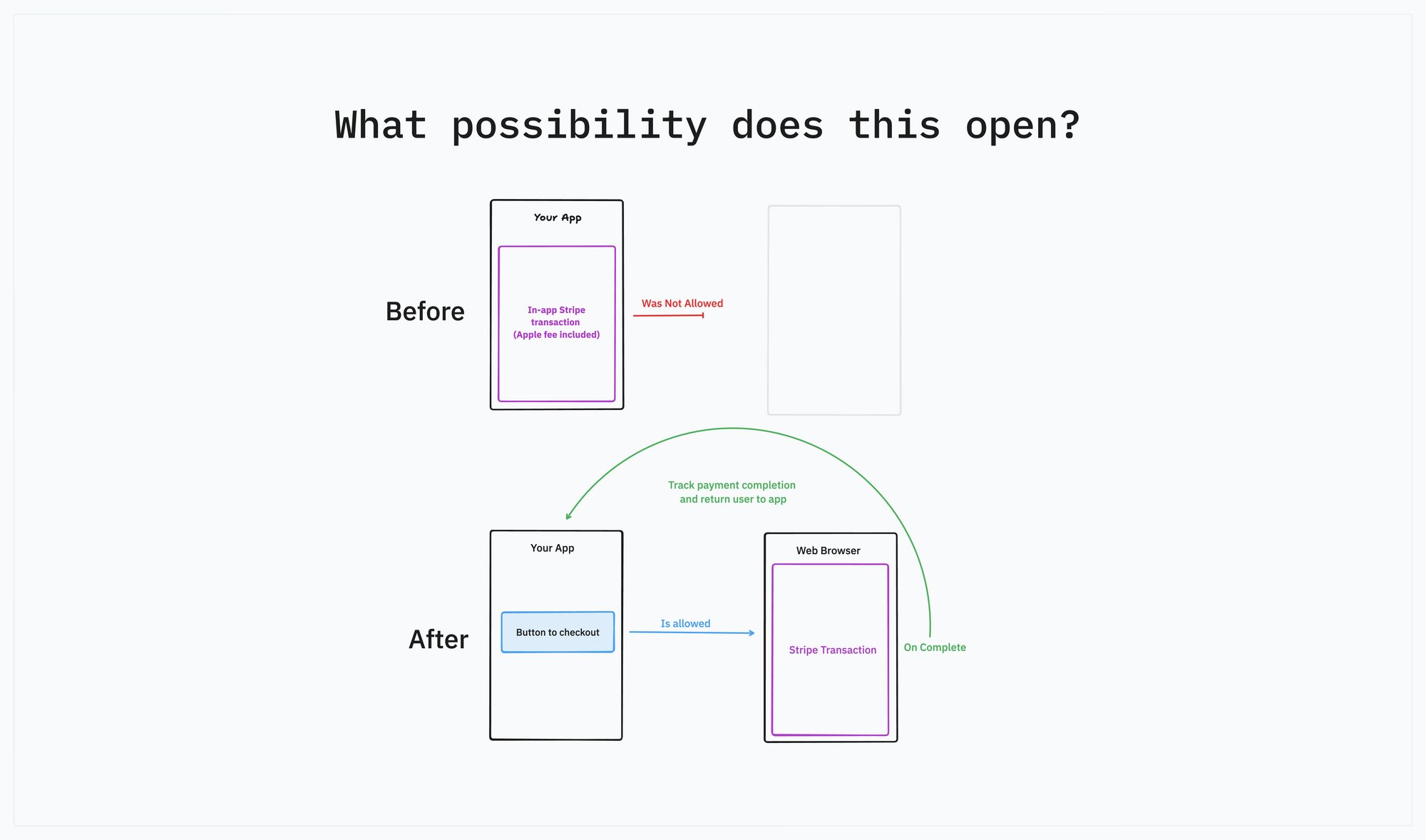A recent ruling in the Epic vs. Apple case just broke down Apple’s long-standing barriers around in-app payments. This is huge for FlutterFlow developers using Stripe, as you can now offer direct, commission-free payments on iOS just like you already do on Android and web.
Let’s break down exactly what this means for you and how you can start benefiting today.
The Court Ruling: What Happened
The U.S. District Judge in the case has issued an order effectively preventing Apple from prohibiting developers from steering users to off-app websites for purchases at lower prices.
This ruling directly addresses Apple's controversial practice of taking a 30% commission on all in-app purchases, which the judge determined was anti-competitive and harmful to consumers who ultimately paid higher prices.
What This Means for You as a FlutterFlow Developer
For FlutterFlow developers using Stripe for payments, this is great news.
Unified Payment Flows Across Platforms
Previously, developers had to maintain two separate payment systems:
- A Stripe checkout flow for web applications
- A completely different implementation for iOS that complied with Apple's App Store payment requirements
Now, you can implement a single, consistent Stripe payment flow across all platforms - web, Android, and iOS - without being forced to use Apple's in-app purchase system for iOS users.
This means you can take the Stripe link and do the transaction in a browser.

Cost Savings & Revenue Increase
- Eliminate Apple's 30% commission on transactions
- Pass savings to customers with more competitive pricing
- Increase your profit margins
- Reduce development costs by maintaining a single payment flow
Improved User Experience
- Create a consistent checkout experience across all platforms
- Implement Stripe's latest payment features uniformly
- Simplify your codebase with a unified implementation
- Reduce testing complexity by eliminating platform-specific payment flows
Implementation Guide for FlutterFlow Developers
Here's how to take advantage of this ruling in your FlutterFlow apps:
- Review your current implementation: If you're already using Stripe in your FlutterFlow app for web/Android, you can now extend this to iOS.
- Update your communication: You can now directly inform iOS users about payment options outside the App Store.
- Implement a web-based checkout: Use FlutterFlow's Stripe integration to create a web-based checkout that works across all platforms.
- Link to external payment pages: You can now include direct links in your iOS app to your web payment pages.
The FlutterFlow documentation for Stripe integration provides the technical foundation for implementing this unified approach.
Real-World Example
Imagine you've built a subscription-based fitness app with FlutterFlow:
- Before the ruling: iOS users paid $9.99/month (with $3 going to Apple), while web users paid $6.99/month
- After the ruling: All users can pay $6.99/month through your Stripe checkout, significantly improving your iOS conversion rate
Next Steps for Developers
To capitalize on this opportunity:
- Review Stripe's documentation on implementing checkout flows
- Update your FlutterFlow app to include direct links to your Stripe payment pages
- Clearly communicate payment options to your users
- Consider adjusting your pricing strategy now that the Apple tax is avoidable
FAQ
Can I still use Apple’s in-app purchases if I want to?
Yes, you can keep using it. But now you have a choice.
Will Apple reject my app for linking to external payments?
According to the new court order, they can’t. Just make sure you follow Apple's updated guidelines and link to a secure, Stripe-hosted page.
Is this just for Stripe?
No, but Stripe is what FlutterFlow supports natively. Other providers could be used with custom code or APIs.
